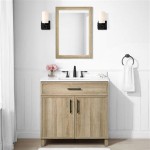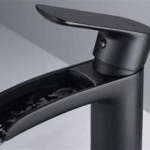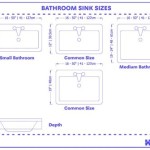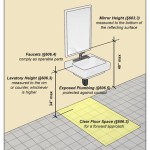Replacing a Bathroom Exhaust Fan with a Heat Lamp: A Comprehensive Guide
The bathroom environment presents unique ventilation and heating needs. While a standard exhaust fan is designed to remove moisture and odors, a heat lamp offers the added benefit of localized warmth, particularly useful after showering or during colder months. The decision to replace a bathroom exhaust fan with a heat lamp involves careful consideration of several factors, including electrical capacity, installation requirements, and the specific needs of the bathroom space. This guide provides detailed information on the process, covering planning, safety precautions, and step-by-step installation instructions.
Before embarking on the replacement, it is crucial to assess the existing exhaust fan setup. This includes noting the fan's size, electrical specifications, and ductwork configuration. Understanding these parameters will inform the selection of an appropriate heat lamp unit and ensure compatibility with the existing infrastructure. Neglecting this initial assessment can lead to complications during installation, requiring additional modifications or even the need to hire a professional electrician.
The primary function of a bathroom exhaust fan is to remove moisture, preventing mold growth and structural damage. Heat lamps, while providing warmth, do not inherently fulfill this ventilation role. Therefore, it's important to consider whether the bathroom has alternative ventilation sources, such as a window, or whether a combination unit that includes both a heat lamp and an exhaust fan is a more suitable option. Balancing the desire for warmth with the necessity of adequate ventilation is a key consideration in this decision-making process.
Safety is paramount when working with electrical fixtures. Before starting any work, the power to the bathroom circuit must be completely shut off at the breaker panel. This prevents the risk of electric shock. It's also advisable to use a non-contact voltage tester to confirm that the circuit is indeed de-energized. Working in a well-lit environment is essential for safety and accuracy. Wearing safety glasses and gloves is also recommended to protect against debris and potential hazards.
Key Point 1: Planning and Preparation
Effective planning is the cornerstone of a successful replacement. This involves several crucial steps: researching and selecting the appropriate heat lamp unit, gathering the necessary tools and materials, and thoroughly understanding the existing electrical wiring. Failure to adequately plan can result in delays, frustration, and potentially unsafe installation practices. Before commencing any physical work, it’s imperative to have a clear roadmap of the entire process.
The selection of a heat lamp should be based on the bathroom's size and layout. Larger bathrooms may require a more powerful heat lamp or multiple lamps to effectively warm the space. Consider the wattage of the heat lamp and its compatibility with the existing electrical circuit. Overloading a circuit can lead to tripped breakers or, in more severe cases, electrical fires. Consult with an electrician if there is any doubt regarding the circuit's capacity.
The necessary tools for the replacement typically include a screwdriver set (both flathead and Phillips), wire strippers, wire connectors, a voltage tester, a drill with various bits, a ladder, and safety glasses. Having all the tools readily available will streamline the installation process and minimize interruptions. Missing tools can often derail the project and necessitate unexpected trips to the hardware store.
Acquiring the necessary materials is equally important. This includes the heat lamp unit itself, wire connectors (such as wire nuts), electrical tape, and any mounting hardware specific to the chosen heat lamp. Refer to the heat lamp's installation instructions for a complete list of required materials. Using the correct materials ensures a secure and safe installation, minimizing the risk of electrical problems down the line.
Before dismantling the existing exhaust fan, carefully inspect and document the wiring connections. Take photographs or create a diagram to accurately record the wires' placement. This will serve as a valuable reference when connecting the new heat lamp. Incorrect wiring can damage the heat lamp or create a hazardous situation. Proper documentation eliminates guesswork and ensures a correct and safe connection.
Key Point 2: Removal of the Existing Exhaust Fan
The removal process must be approached systematically to avoid damaging the surrounding ceiling or electrical wiring. Start by carefully removing the exhaust fan's cover, which is typically held in place by screws or spring clips. Once the cover is removed, disconnect the electrical wires, making sure to label them clearly. Note the color of each wire and its corresponding terminal on the exhaust fan. This information will be crucial for connecting the new heat lamp.
After disconnecting the wires, detach the exhaust fan housing from the ceiling. The housing is usually secured with screws or mounting brackets. Use a screwdriver or drill to remove these fasteners. Be prepared to support the exhaust fan housing as it is detached to prevent it from falling and causing damage. Work slowly and deliberately, taking care not to damage the ceiling or any surrounding fixtures.
Once the exhaust fan housing is removed, inspect the ductwork connected to it. The ductwork is responsible for venting the air outside. If the ductwork is damaged or deteriorated, it should be replaced. Ensure that the ductwork is properly insulated to prevent condensation and energy loss. Proper ductwork is essential for the effective operation of both exhaust fans and heat lamps.
Before proceeding with the installation of the heat lamp, clean the area where the exhaust fan was previously located. Remove any dust, debris, or residue that may have accumulated. This will provide a clean surface for mounting the new heat lamp. A clean surface also ensures proper contact and prevents any potential issues with the mounting hardware.
Carefully inspect the existing wiring for any signs of damage or deterioration. If the wiring is frayed, cracked, or corroded, it should be replaced. Damaged wiring can pose a significant safety hazard. Consult with an electrician if there are any concerns about the condition of the wiring. Addressing any wiring issues before installing the heat lamp is crucial for safety and long-term reliability.
Key Point 3: Installation of the New Heat Lamp
With the old exhaust fan removed and the area prepared, the installation of the new heat lamp can begin. Consult the heat lamp's installation instructions for specific guidance, as different models may have varying installation requirements. Generally, the installation process involves mounting the heat lamp housing, connecting the electrical wiring, and securing the heat lamp cover.
Begin by mounting the heat lamp housing to the ceiling. Use the provided mounting hardware to securely attach the housing to the joists or ceiling supports. Ensure that the housing is level and properly aligned. A secure and level mounting is essential for the safe and effective operation of the heat lamp. Improper mounting can lead to vibrations, noise, or even the risk of the heat lamp falling.
Connect the electrical wiring to the heat lamp, carefully matching the wires to the corresponding terminals. Use wire connectors to securely join the wires together. Ensure that all connections are tight and secure. Loose connections can cause arcing, overheating, and potentially electrical fires. Double-check all wiring connections before proceeding to the next step.
After connecting the wiring, carefully tuck the wires into the heat lamp housing, ensuring that they are not pinched or strained. Replace the heat lamp cover, securing it with screws or clips. Make sure the cover is properly seated and tightly secured. A properly installed cover protects the internal components of the heat lamp and prevents any potential hazards.
Before turning the power back on, inspect the installation one last time. Ensure that all connections are secure, the wiring is properly routed, and the heat lamp is securely mounted. Once satisfied with the installation, turn the power back on at the breaker panel. Test the heat lamp to ensure that it is functioning properly. If the heat lamp does not turn on or if there are any other issues, turn the power back off and re-inspect the wiring and connections.
Following these steps meticulously will help ensure the safe and effective replacement of a bathroom exhaust fan with a heat lamp, providing both warmth and functionality to the bathroom environment.

Should I Install A Bathroom Heater Fan Light Combo

How To Add Exhaust Fan Heater Light Fixture Combination

Install A New Bathroom Vent Fan Light The San Fernando Valley Sun

Bathroom Ventilation Fans
How To Install A Bathroom Exhaust Fan

Why Martec 3 In 1 Bathroom Heaters Are The Quickest To Install

Should I Install A 3 In 1 Bathroom Heater Martec

Broan Nutone Bath Fan Model 765h80l Disassembly Repair Help

Broan Nutone Powerheat Series 110 Cfm Ceiling Bathroom Exhaust Fan With Heater And Cct Led Lighting Bhfled110 The Home Depot
How To Install A Bathroom Exhaust Fan







